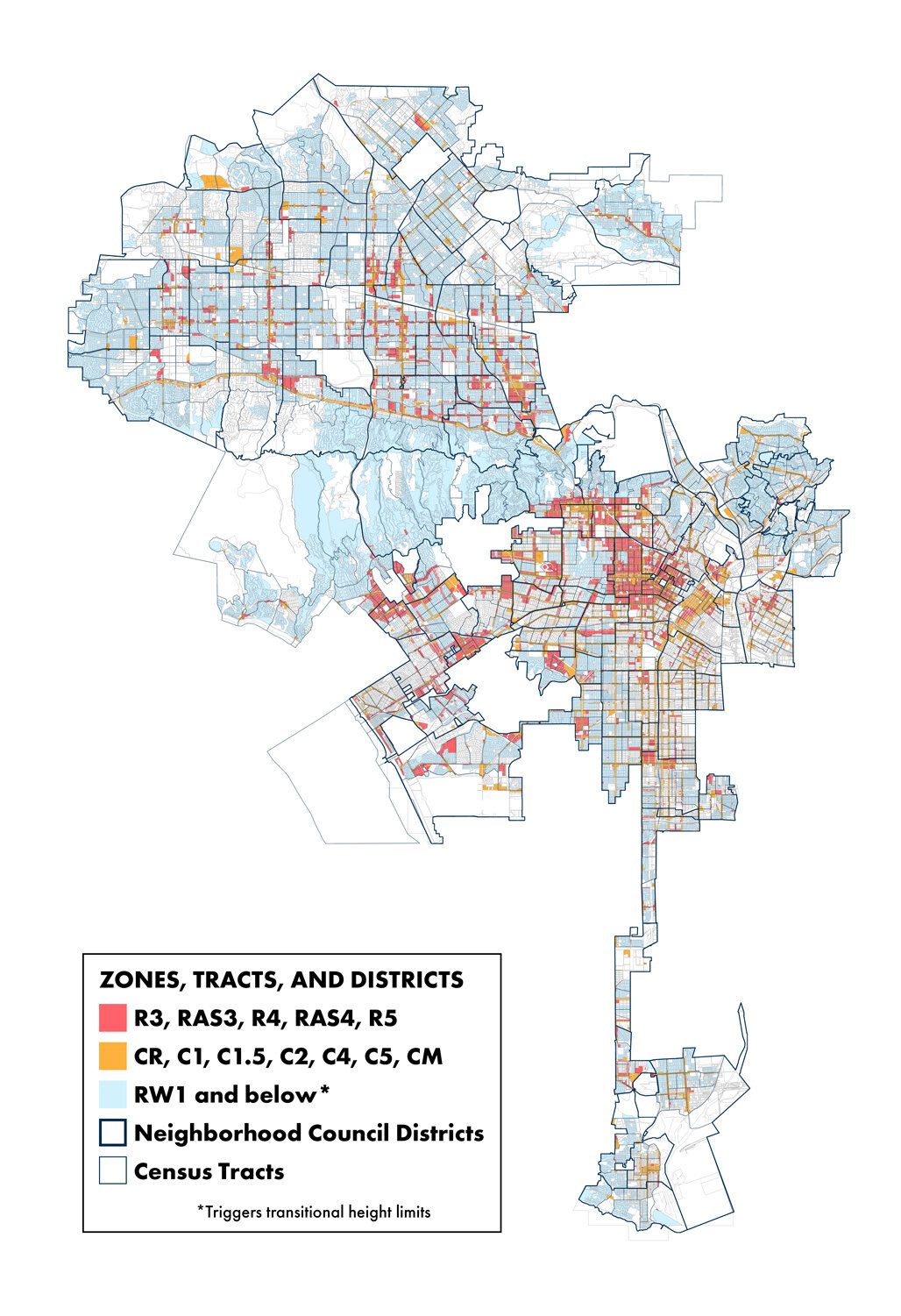Inclusionary Zoning
How can fine-grained spatial analysis help inform inclusionary zoning policy, and allow for a far more specific targeting of policy outcomes? Uniquely, this project seeks to understand how to offset population displacement between neighborhoods by analyzing the affordability gap of every location in the City— independent of income levels. The research also aims to reveal ways to incentivize private developers to increase the supply in the most cost-burdened areas of a municipality.
There are a multitude of urban design and planning projects in the United States that are described as data-driven, but the same granular analytical approach has not been applied to housing policy. This work addresses that gap in knowledge. It expands upon research conducted in 2019 by SCI-Arc’s Urban Pasts and Futures Lab, (UPF), in collaboration with the Los Angeles Area Chamber of Commerce in its development of its Neighborhood Protection and Affordability (NPA) Ballot Initiative. In this project, SCI-Arc develops an atlas of inclusionary zoning policy revisions and show their impact on built environments, leading to the creation of a prototype policy.
The final outcome of the project is a blueprint for inclusionary zoning that will give policymakers a critical tool for understanding how to increase the supply of affordable housing in the most cost-burdened areas of the City of Los Angeles and how to manage the affordable housing supply for different income groups – from extremely low-income units to workforce housing at slightly above median income in proximity to employment centers. Not only this will be a comprehensive study of inclusionary zoning elements, but also of how new legislation can use generative design tools to leverage existing zoning, entitlement, density, and transit policies for greater impact on the actions initiated by market forces.
One of the goals is to provide a comprehensive picture of the city’s geography of cost-burdened households at all levels of income, suggest a data-driven policy mechanism, and lastly, illustrate spatial outcomes of this mechanism to inform policymakers, profit and nonprofit developers, grassroots organizations, and the general public about the implications of a tailored approach to housing provision.
Supporters: ESRI, Los Angeles Area Chamber of Commerce, Los Angeles Housing and Community Investment Department
